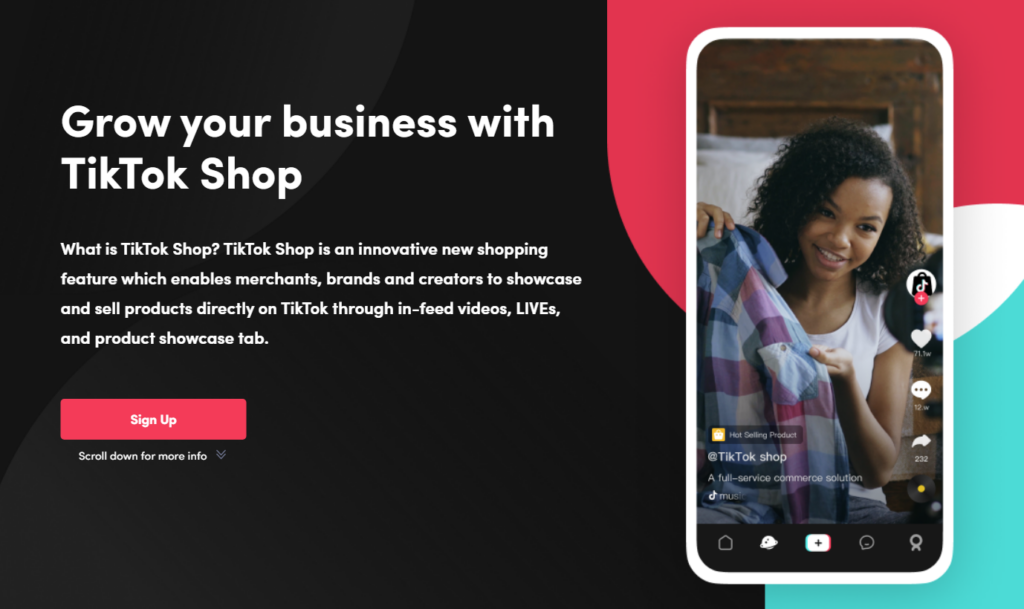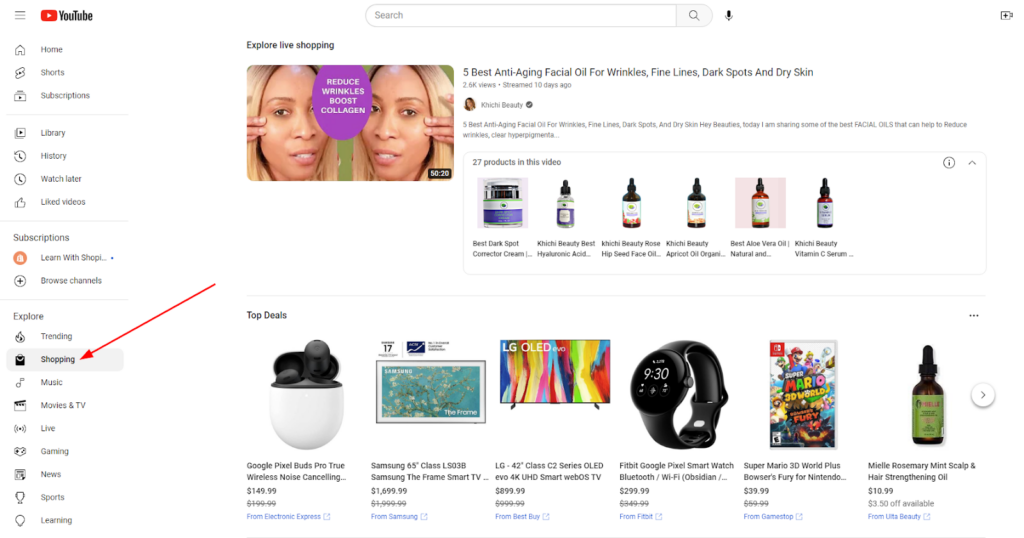Top 5 Social Commerce Platforms to Skyrocket Your Online Sales

Running an eCommerce business means having an online store (platform) and selling products to online shoppers through that platform. Is it correct??
Yes, a few years back, it was!
But now things have changed. And with the evaluation of eCommerce, more sales and marketing channels have been added to make the industry more profitable. “Social Commerce Platforms” are one of them that are popular nowadays!
Most successful merchants are already into social commerce and showcasing how to use social media platforms to unlock new ways to generate more sales and revenue. If you haven’t tested social commerce, then it’s time. And with a guide to show you the right path, your time and efforts invested in the new path won’t get wasted.
Here, in this blog, you will learn the basics of social commerce and the top social commerce platforms for your eCommerce business. Not only this, while reading further you will also find the best ways and latest trends to ensure social commerce success.
Let’s begin the read!
What is Social Commerce?
Let’s keep it simple: Social commerce means selling products online via social media platforms!
Here the term “Social” belongs to social media and “Commerce” belongs to eCommerce. So, when we combine them, it becomes Social Commerce (Social media + eCommerce = Social Commerce).
For today’s generation, social media is the favorite way to get rid of boredom. Millions of people start or even end their days with social media. So, it’s a great opportunity for eCommerce brands to connect with customers where they are spending a lot of their time—on social media platforms.
What’s great about social commerce is that it helps you reach your target audience directly who can be your customer in the near future. By making it easier for social media users to purchase products, you can increase your online sales and improve customer satisfaction.
Social media platforms also provide valuable data on customer behavior, which can help you optimize your marketing strategies. Not only this, I have listed more reasons why you should give a chance to social commerce platforms to boost your sales.
Let’s explore all of them!
Why Social Commerce matters for Online Businesses
The benefits of social commerce are huge! It’s up to you how you reap those benefits to grow your eCommerce business as well as your social presence.
Here are the benefits of social commerce that you’ll love:
BENEFIT 1# More customers can find you on social platforms
Social media platforms have millions of users, and social commerce can help you reach a wider audience and increase brand awareness. So, if you will build your brand on social commerce platforms, more people will be aware of your eCommerce business!
These platforms also offer advanced targeting options that allow you to reach specific groups of customers based on their interests, behaviors, and demographics. This allows you to understand your audience better and tailor your marketing approaches accordingly.
BENEFIT 2# Offer a streamlined buying process

This was a dream a few years back!
Now it’s possible to offer built-in shopping features such as shoppable posts and in-app checkout to your shoppers or users on social platforms.
Unlike the old social shopping method where the user has to navigate to the online store to complete their purchase, many social commerce platforms offer seamless in-app purchasing (where a user can complete the purchase without changing the platform).
This can drive more sales by reducing friction in the buying process and making it easier for customers to complete a purchase.
BENEFIT 3# Build trust and credibility with social media platforms
One common difference I found between a legit brand and a brand that is not legit—the legit brand has an active business profile as well as a convincing social presence and the non-legit brand doesn’t.
By having a social media presence and engaging with customers on these platforms, you can build trust and credibility with your audience. On the other hand, you can provide prompt customer service and resolve issues quickly. This is enough to improve customer satisfaction and get positive feedback for your customers.
As an additional benefit, this can help establish a deeper connection with your customers and make them more likely to purchase from you.
BENEFIT 4# Learn more about your shoppers
Do you know about your future customers? I know it’s difficult to predict them and their behavior.
Don’t worry, because social commerce platforms offer valuable data and analytics that can help you get insights into your customers’ behavior and preferences. By analyzing this data, you can optimize your marketing strategies, improve your product offerings, and better target your audience.
Social media lets you have real-time conversations with your customers, respond to their inquiries and feedback and showcase your brand’s personality and values. This can ultimately lead to increased ROI and overall business growth.
BENEFIT 5# Better communication with customers
I feel more comfortable asking my doubts in the post comments on social media like other users.

Many social commerce platforms let you create interactive and engaging customer experiences, such as contests, giveaways, and polls. So, you can communicate with customers in real-time, providing a more personalized and engaging experience.
Facebook—the top social commerce platform allows you to build a community around your brand, engaging with customers and creating a sense of belonging. This can help increase customer engagement and loyalty, as they feel more connected to your brand and are more likely to share your content with their own social networks.
This is how social commerce platforms are beneficial for your eCommerce store!
Now let’s check out the best social commerce platforms where you can invest your time and efforts to get optimal results.
Top 5 Social Commerce Platforms
Now that you know the importance of social commerce for boosting eCommerce business and eliminating the limitations of eCommerce platforms, it’s time to reveal the most effective social commerce platforms.
1. Facebook (Meta)
I hope you won’t be surprised by getting this social commerce platform in the first position.
Being a dominating social platform for people, Facebook is also a powerful tool for businesses looking to connect with their customers and drive sales.
With over 2.9 billion active users, Facebook offers a massive potential audience for businesses to tap into and reach through various channels such as Facebook Pages, Groups, and Messenger.
Facebook’s own social commerce features enable you to reach a wider audience, attract potential customers and connect with them in a more personalized way. You can set up a Facebook Shop to showcase your products, add descriptions, and pricing, and manage your inventory.

And how can you forget about Marketplace on Facebook? You can simply list your products on the Facebook marketplace which will help local customers to find your products.
Facebook not only helps you get more customers but also helps you to maintain customer relationships. For example, you can use Facebook Messenger to provide customer support and answer questions in real-time, and Facebook Groups to create communities around your products and services.
This social commerce platform offers distinct targeting options that will help you to create highly targeted advertising campaigns that are designed to reach specific audiences. For example, you can create ads that target people who have previously interacted with your Facebook page or website, or people who are interested in a particular product category.
2. Instagram
Instagram is not lesser than Facebook. But as I can’t keep both in the first place, I kept Instagram very next.
Instagram shopping—a fantastic social commerce platform that can help you reach a wider audience and drive more sales! With its huge user base and user-centric algorithm, Instagram is the perfect place to showcase your products and connect with potential customers.

By creating a business profile and utilizing tools like shoppable posts, product tags, and Instagram Stories, you can effectively market your products and increase engagement with your audience.
But that’s not all – Instagram’s influencer marketing capabilities can also help you partner with relevant influencers to promote your products and reach even more potential customers.
So, if you’re looking to grow your online sales in a casual way, Instagram is definitely the platform you want to be on.
3. TikTok
TikTok has quickly become one of the most popular social media platforms around, with over 1 billion active users. But, it’s not just for dancing and lip-syncing videos anymore – it’s also a powerful platform for driving sales.
One of the best things about TikTok is that it’s a highly visual platform, which makes it perfect for eCommerce businesses. You can use TikTok to create eye-catching product demos, share customer reviews, or even create fun challenges that encourage people to buy your products.
Not only this, TikTok has recently introduced new eCommerce features that make it even easier to sell products directly on the platform.
How? You can now add links to your eCommerce store in your TikTok bio or even use the built-in shopping features to sell products directly from your TikTok account.

Another way to use TikTok for social commerce is by TikTok Shop which showcases your products. You can use TikTok’s editing tools to create engaging and visually appealing videos that showcase your products in a creative way. You can also use hashtags and collaborate with other TikTok users to increase your reach.
TikTok’s algorithm is designed to promote content that is engaging and relevant to its users. This means that if you create high-quality content that resonates with your target audience, you’re more likely to get your videos seen by a large audience.
4. YouTube
YouTube—the top second most visited site on the internet. It’s not only the world’s most popular video-sharing platform, but it also offers a vast and engaged audience of over 2 billion monthly active users.
Have you heard about YouTube Shopping? It’s a feature that can help you drive more sales and make the shopping experience more seamless for your customers.
Here’s how it works: With YouTube Shopping, you can tag your products in your YouTube videos. When a viewer clicks on a product tag, they’ll see product images, prices, and links to purchase the product from your eCommerce store. This makes it easier for customers to discover and buy your products directly from your YouTube videos.
It’s important to note that YouTube Shopping is currently only available in select markets, and it’s limited to certain types of products. To be eligible for YouTube Shopping, your products must meet certain requirements, such as having a unique identifier and a clear product image.

5. Pinterest
You won’t believe but yes, Pinterest can be the next sales channel for your eCommerce business.
Pinterest is a visual discovery and bookmarking platform that allows users to save and share images and videos on virtual pinboards. With its highly engaged user base of over 450 million monthly active users, Pinterest provides a valuable opportunity for eCommerce stores to showcase their products and connect with potential customers.
Pinterest Shopping allows creating visually appealing pins and boards that showcase your products, you can increase brand awareness and attract more traffic to your online store. This way Pinterest drives sales directly by enabling Buyable Pins, which allow users to make purchases without leaving the Pinterest platform.

Additionally, Pinterest offers a range of advertising options, such as Promoted Pins and Pinterest Ads, that can help you target specific audiences and drive even more traffic and sales to your online store.
In a nutshell, Pinterest is a popular social commerce platform for eCommerce sellers to increase sales by creating visually appealing pins, enabling Buyable Pins, and utilizing advertising options.
These were the top 5 social commerce platforms that can help you generate more sales apart from your eCommerce platform. There are more platforms you can consider to integrate social shopping that I couldn’t include in the list, such as:
- Twitter shops
- Snapchat
- Twitch
and many more…
Now let’s see some best social commerce strategies to ensure social commerce success.
Read More: Linkpop: How it Helps You to Create a Mini Shopify Store
Best practices for Social Commerce Success
Whichever social commerce tools you want to utilize, I want you to get the most out of it. Otherwise would be waste of time and effort.
Here are the best practices to make your efforts result-oriented for social commerce:
1. Choosing the right social media platform

Different social media platforms attract different audiences. For example, if your online store sells products that are popular with the younger generation, then platforms like TikTok and Instagram might be the best fit for you. If your target audience is more professional, then LinkedIn might be a better option.
By choosing the right platform, you’ll be able to connect with your ideal customers and build a community that resonates with your brand.
Also, each social media platform has its own unique features and strengths. Instagram is great for visually showcasing your products, while Twitter is ideal for real-time updates and conversations.
Facebook is perfect for building relationships with your customers through direct messaging, while Pinterest is ideal for sharing inspiration and ideas. That’s why you need to identify the strengths of each platform for maximizing user engagement and driving more sales.
By focusing on more than one or two platforms that align with your target audience and brand values, you can make the most of your time and resources, and achieve better results in the long run.
Take the time to research and understand your target audience, and the strengths of each platform, so that you can create a social media strategy that drives sales, builds brand awareness and helps you achieve your business goals.
2. Building an active and engaged social media following

When people follow your social media accounts, they are more likely to share your content with their own followers, which can help to expand your reach and attract new customers. This way, you can create a loyal fanbase that actively promotes your brand and products.
This can lead to increased customer loyalty and repeat purchases, as well as word-of-mouth referrals from satisfied customers. By building a community around your brand on social media, you can create a powerful sales channel that drives revenue and helps you grow your business.
Lastly, when you have an active and engaged social media following, you can gather valuable insights and feedback from your customers.
For example, by observing comments and messages on your social media accounts, you can gain insights into what your customers like and don’t like about your products and services. This can help you make better product development and marketing decisions and improve the overall customer experience.
3. Creating high-quality content that resonates with brand value

Of course, social commerce does come with its own set of challenges. With so many businesses using social media to sell products, it can be difficult to stand out from the crowd. And again you need to be careful not to sound too pushy in your social media content.
People trust the truth. And you can create a loyal customer base if you would share genuine information about your brand, products, and how it actually solves their problems.
So, as an online merchant, you have to build valuable content for your social media following if you want to succeed in the competition. By posting high-quality content, you can create brand awareness, drive sales, and gather valuable insights that help you improve your business.
4. Incorporating social proof and user-generated content
Word of mouth is a magical weapon. People talk about things that excite them and they don’t wait for a minute to recommend them to their circle.

User-generated content (UGC) is the booster that influences other social media users to take the final call. This can include social proof such as reviews, testimonials, photos, videos, and more.
When we see that other people like or use a particular product or service, we are more likely to trust and purchase it ourselves. This is why you need social proof to increase customer loyalty and sales.
One way you can incorporate social proof and UGC into your social commerce strategy is by leveraging social media platforms. For example, an eCommerce brand can encourage customers to leave reviews on their social media pages or share photos of themselves using their products.
This not only provides social proof but also helps to create a sense of community around the brand.
Once you get mentioned by the shoppers, don’t forget to feature them on your eCommerce platform. Display customer reviews and ratings, add user-generated photos and videos to your product page or other pages, or create a dedicated section for customer stories and testimonials.
5. Leveraging social media advertising
Paid promotion is always a great option when you require quick outputs—reach, leads, sales, and many more! And with the right strategy, you can use social media advertising to achieve success in social commerce.
One of the coolest things about social media advertising is that you can customize your ads according to the specific goals and audience. You can choose from a variety of ad formats, like image ads, video ads, and more. This helps you create ads that are compelling and engaging for your audience.
And by targeting users who are interested in similar products, you can increase the chances of converting those users into customers.
But it’s not just about promoting products! You can also use social media advertising to build brand awareness and establish a loyal customer base. By creating ads that showcase their brand values and unique selling proposition, businesses can create a loyal following that will continue to support them in the long run.
So, if you’re looking to succeed in social commerce, consider incorporating social media advertising into your strategy.
6. Using influencer marketing

Influencers are social media personalities with a large following. With influencers who share their values and target audience, you can unlock many ways to promote your products and services.
When an influencer testifies for a product, their followers are more likely to trust it and buy it themselves. That’s because influencers have built a relationship with their followers based on shared interests and values.
Influencers have a huge following on social media, which means that you can reach a wider audience than you could on your own. By partnering with influencers who have highly engaged followers, you can promote your products and encourage their followers to make a purchase.
For example, if you have got a beauty product line, you can collaborate with beauty influencers and ask them to feature your products in their makeup tutorials or relevant content. You can also include discount codes or special offers to entice their followers to make a purchase.
Hope you will try to incorporate all of the above strategies to make your social commerce more successful.
Now let’s explore the latest advancements in social commerce platforms that can help you offer a seamless shopping experience to your social shoppers.
Latest Trends and Features in Social Commerce
What makes social platforms better for online shoppers? The answer is simple—their amazing features. These features improve the online shopping experience better for users and this ultimately helps eCommerce brands to grow their business.
Here are some of the latest trends and features you can find on social commerce platforms:
Marketplaces
Social media platforms like Facebook, Instagram, and Pinterest have introduced marketplaces where sellers can list and sell their products directly to consumers. These marketplaces offer a convenient way for businesses to reach a large audience and for consumers to discover and purchase products without leaving the platform.
Live shopping
Live shopping is becoming increasingly popular, with platforms like Instagram and Facebook offering live shopping features. Brands can host live events where they showcase their products and consumers can make purchases in real-time.
These events involve shopping through live streaming of product demonstrations, reviews, and Q&A sessions. It enables businesses to interact with customers, answer their queries, and showcase their products in a more engaging way.
Augmented Reality (AR)
AR is being used by some brands to provide an interactive shopping experience for consumers. AR technology allows consumers to try on products virtually before making a purchase. It helps in enhancing the overall shopping experience and reduces the rate of returns.
Shoppable posts
Social media platforms like Instagram, Facebook, and Pinterest have rolled out shoppable posts, allowing brands to tag products in their posts and enabling consumers to make purchases directly from the platform.
Influencer marketing
Influencer marketing continues to be an effective way for brands to reach consumers on social media. Brands collaborate with influencers who have a large following and promote their products to their audience.
Personalization
Social media platforms are increasingly using data and algorithms to personalize the shopping experience for consumers. This includes personalized recommendations, targeted advertising, and customized messaging.
This helps to create a more personalized shopping experience for customers and can lead to increased engagement and social commerce sales.
Automated replies
Social commerce tools offer AI-powered assistants that can help customers with their queries, provide product recommendations, and even process orders. This can help to improve response times and provide customers with quick and efficient support. Automated replies to provide a more human touch, especially when paired with a lead enrichment tool that gives deeper context about each customer.
Social payment
Various social media platforms, such as Facebook, WeChat, WhatsApp, and Snapchat, are allowing users to make payments directly through the platform. This can streamline the checkout process and make it more convenient for consumers.
Quick Recap!
No doubt, you might be using social media marketing to encourage users to visit your eCommerce site and buy your products. But with social commerce, you can now eliminate the additional efforts your shoppers make to purchase your products.
With the help of the top social commerce platforms we’ve outlined in this article, you can create a unified shopping experience for your customers, leading to higher sales and increased customer loyalty.
Whether you choose to go with Facebook, Instagram, Pinterest, TikTok, or YouTube, make sure to invest time in building a strong social commerce strategy to take full advantage of the benefits these platforms offer.
I hope this has been helpful! Don’t hesitate to reach out if you have any questions or need further guidance. We’re here to help you succeed!






Post a Comment
Got a question? Have a feedback? Please feel free to leave your ideas, opinions, and questions in the comments section of our post! ❤️